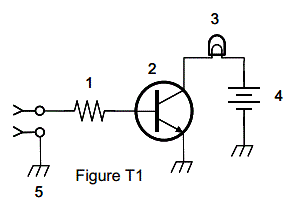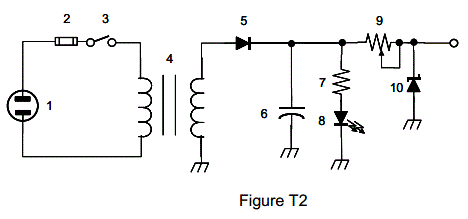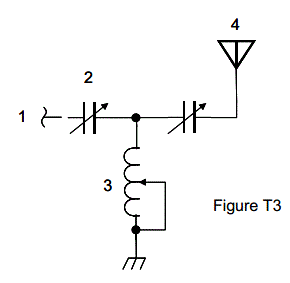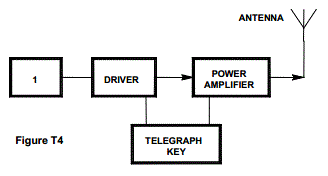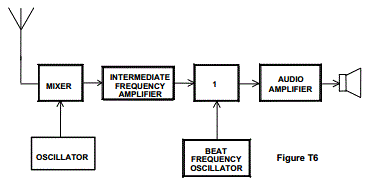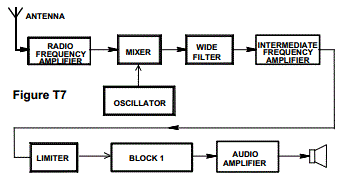Ham Technician License Practice Quiz
• Percentage: 0%; Correct: 0; Total: 0 of 35
T0A02: How does current flowing through the body cause a health hazard?
By heating tissue
It disrupts the electrical functions of cells
It causes involuntary muscle contractions
All of these choices are correct
T0B01: When should members of a tower work team wear a hard hat and safety glasses?
At all times except when climbing the tower
At all times except when belted firmly to the tower
At all times when any work is being done on the tower
Only when the tower exceeds 30 feet in height
T0C10: Why is duty cycle one of the factors used to determine safe RF radiation exposure levels?
It affects the average exposure of people to radiation
It affects the peak exposure of people to radiation
It takes into account the antenna feedline loss
It takes into account the thermal effects of the final amplifier
T1A02: What agency regulates and enforces the rules for the Amateur Radio Service in the United States?
FEMA
The ITU
The FCC
Homeland Security
T1B11: What emission modes are permitted in the mode-restricted sub-bands at 50.0 to 50.1 MHz and 144.0 to 144.1 MHz?
CW only
CW and RTTY
SSB only
CW and SSB
T1C04: When are you allowed to operate your amateur station in a foreign country?
When the foreign country authorizes it
When there is a mutual agreement allowing third party communications
When authorization permits amateur communications in a foreign language
When you are communicating with non-licensed individuals in another country
T1D05: When may amateur radio operators use their stations to notify other amateurs of the availability of equipment for sale or trade?
When the equipment is normally used in an amateur station and such activity is not conducted on a regular basis
When the asking price is $100.00 or less
When the asking price is less than its appraised value
When the equipment is not the personal property of either the station licensee or the control operator or their close relatives
T1E11: Who does the FCC presume to be the control operator of an amateur station, unless documentation to the contrary is in the station records?
The station custodian
The third party participant
The person operating the station equipment
The station licensee
T1F07: Which of the following restrictions apply when appending a self-assigned call sign indicator?
It must be more than three letters and less than five letters
It must be less than five letters
It must start with the letters AA through AL, K, N, or W and be not less than two characters or more than five characters in length
It must not conflict with any other indicator specified by the FCC rules or with any call sign prefix assigned to another country
T2A07: Which of the following is true when making a test transmission?
Station identification is not required if the transmission is less than 15 seconds
Station identification is not required if the transmission is less than 1 watt
Station identification is required only if your station can be heard
Station identification is required at least every ten minutes during the test and at the end
T2B09: Which of the following methods is encouraged by the FCC when identifying your station when using phone?
Use of a phonetic alphabet
Send your call sign in CW as well as voice
Repeat your call sign three times
Increase your signal to full power when identifying
T2C07: What should you do to minimize disruptions to an emergency traffic net once you have checked in?
Whenever the net frequency is quiet, announce your call sign and location
Move 5 kHz away from the net's frequency and use high power to ask other hams to keep clear of the net frequency
Do not transmit on the net frequency until asked to do so by the net control station
Wait until the net frequency is quiet, then ask for any emergency traffic for your area
T3A02: Why are UHF signals often more effective from inside buildings than VHF signals?
VHF signals lose power faster over distance
The shorter wavelength allows them to more easily penetrate the structure of buildings
This is incorrect; VHF works better than UHF inside buildings
UHF antennas are more efficient than VHF antennas
T3B08: What are the frequency limits of the VHF spectrum?
30 to 300 kHz
30 to 300 MHz
300 to 3000 kHz
300 to 3000 MHz
T3C02: Which of the following might be happening when VHF signals are being received from long distances?
Signals are being reflected from outer space
Signals are arriving by sub-surface ducting
Signals are being reflected by lightning storms in your area
Signals are being refracted from a sporadic E layer
T4A07: How is the computer's sound card used when conducting digital communications using a computer?
The sound card communicates between the computer CPU and the video display
The sound card records the audio frequency for video display
The sound card provides audio to the microphone input and converts received audio to digital form
All of these choices are correct
T4B08: What is the advantage of having multiple receive bandwidth choices on a multimode transceiver?
Permits monitoring several modes at once
Permits noise or interference reduction by selecting a bandwidth matching the mode
Increases the number of frequencies that can be stored in memory
Increases the amount of offset between receive and transmit frequencies
T5A11: What is the basic unit of electromotive force?
The volt
The watt
The ampere
The ohm
T5B07: If a frequency readout calibrated in megahertz shows a reading of 3.525 MHz, what would it show if it were calibrated in kilohertz?
0.003525 kHz
35.25 kHz
3525 kHz
3,525,000 kHz
T5C09: How much power is being used in a circuit when the applied voltage is 13.8 volts DC and the current is 10 amperes?
138 watts
0.7 watts
23.8 watts
3.8 watts
T5D05: What is the resistance in a circuit for which the applied voltage is 12 volts and the current flow is 1.5 amperes?
18 ohms
0.125 ohms
8 ohms
13.5 ohms
T6A10: What is the nominal voltage of a fully charged nickel-cadmium cell?
1.0 volts
1.2 volts
1.5 volts
2.2 volts
T6B01: What class of electronic components is capable of using a voltage or current signal to control current flow?
Capacitors
Inductors
Resistors
Transistors
T6C12: What do the symbols on an electrical circuit schematic diagram represent?
Electrical components
Logic states
Digital codes
Traffic nodes
T6D08: Which of the following is used together with an inductor to make a tuned circuit?
Resistor
Zener diode
Potentiometer
Capacitor
T7A10: What device increases the low-power output from a handheld transceiver?
A voltage divider
An RF power amplifier
An impedance network
A voltage regulator
T7B02: What is meant by fundamental overload in reference to a receiver?
Too much voltage from the power supply
Too much current from the power supply
Interference caused by very strong signals
Interference caused by turning the volume up too high
T7C05: What is the approximate SWR value above which the protection circuits in most solid-state transmitters begin to reduce transmitter power?
2 to 1
1 to 2
6 to 1
10 to 1
T7D01: Which instrument would you use to measure electric potential or electromotive force?
An ammeter
A voltmeter
A wavemeter
An ohmmeter
T8A10: What is the typical bandwidth of analog fast-scan TV transmissions on the 70 cm band?
More than 10 MHz
About 6 MHz
About 3 MHz
About 1 MHz
T8B05: What is a satellite beacon?
The primary transmit antenna on the satellite
An indicator light that that shows where to point your antenna
A reflective surface on the satellite
A transmission from a space station that contains information about a satellite
T8C03: What popular operating activity involves contacting as many stations as possible during a specified period of time?
Contesting
Net operations
Public service events
Simulated emergency exercises
T8D02: What does the term APRS mean?
Automatic Position Reporting System
Associated Public Radio Station
Auto Planning Radio Set-up
Advanced Polar Radio System
T9A05: How would you change a dipole antenna to make it resonant on a higher frequency?
Lengthen it
Insert coils in series with radiating wires
Shorten it
Add capacity hats to the ends of the radiating wires
T9B10: What electrical difference exists between the smaller RG-58 and larger RG-8 coaxial cables?
There is no significant difference between the two types
RG-58 cable has less loss at a given frequency
RG-8 cable has less loss at a given frequency
RG-58 cable can handle higher power levels
